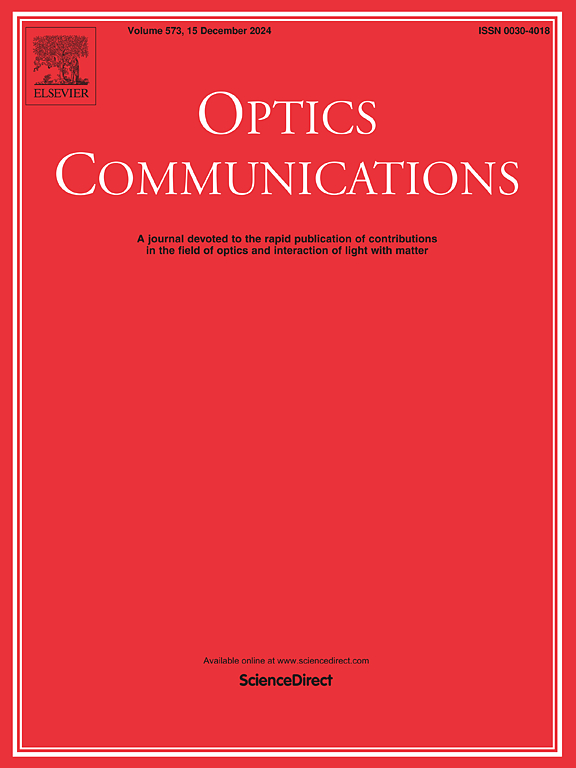Realization of multifunctional optical devices based on valley topological photonic crystals with triangular lattice
IF 2.2
3区 物理与天体物理
Q2 OPTICS
引用次数: 0
Abstract
The emergence of valley Hall topological photonic crystals (VPCs) has driven advancements in the field of optical applications such as optical communication and optical computing. In this work, we propose valley photonic crystals with triangular lattice composed of silicon rods to achieve topological edge states (TESs) and topological corner states (TCSs), and investigate the influence of two different domain interfaces of bearded-shaped and zigzag-shaped between two VPCs with opposite valley Chern numbers on TESs and TCSs. TESs and TCSs obtained from different interfaces have different frequencies and the robustness of them to defects is demonstrated. A rhomboidal hybrid structure with various valley interfaces is designed to achieve the functions of frequency division, beam splitting and three-channel photonic router based on TESs. In addition, a rhomboidal hybrid VPC waveguide-cavity coupling system is proposed, which comprises a Y-shaped air waveguide and two triangular box-shaped cavities with different domain interfaces. Both ‘AND gate’ and ‘OR gate’ logic gate functionalities can be achieved in the same structure corresponding to different frequency ranges by the coupling of air waveguides and box-shaped cavities utilizing the strong localization of corner states. This work provides a new approach for integrated devices, particularly in the fields of integrated circuits and integrated photonic devices, based on triangular photonic crystals.
求助全文
约1分钟内获得全文
求助全文
来源期刊

Optics Communications
物理-光学
CiteScore
5.10
自引率
8.30%
发文量
681
审稿时长
38 days
期刊介绍:
Optics Communications invites original and timely contributions containing new results in various fields of optics and photonics. The journal considers theoretical and experimental research in areas ranging from the fundamental properties of light to technological applications. Topics covered include classical and quantum optics, optical physics and light-matter interactions, lasers, imaging, guided-wave optics and optical information processing. Manuscripts should offer clear evidence of novelty and significance. Papers concentrating on mathematical and computational issues, with limited connection to optics, are not suitable for publication in the Journal. Similarly, small technical advances, or papers concerned only with engineering applications or issues of materials science fall outside the journal scope.
 求助内容:
求助内容: 应助结果提醒方式:
应助结果提醒方式:


